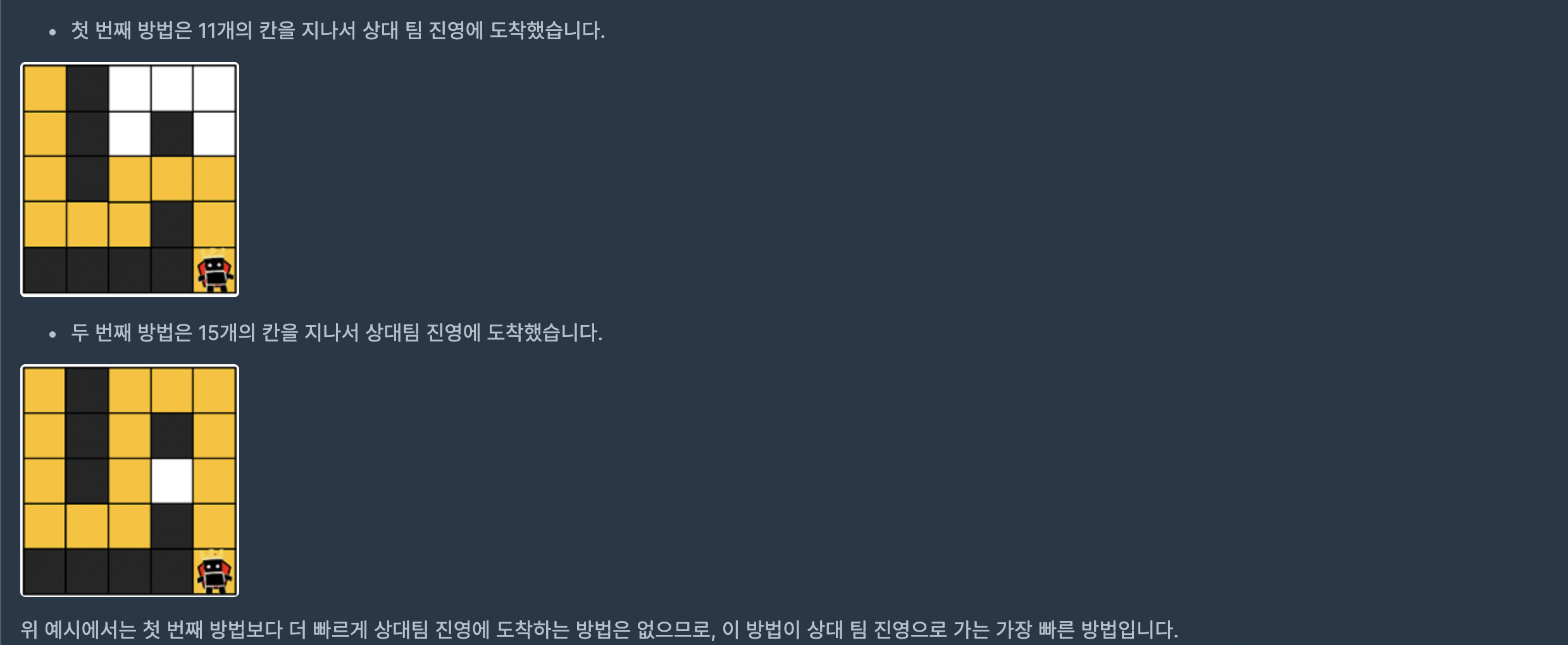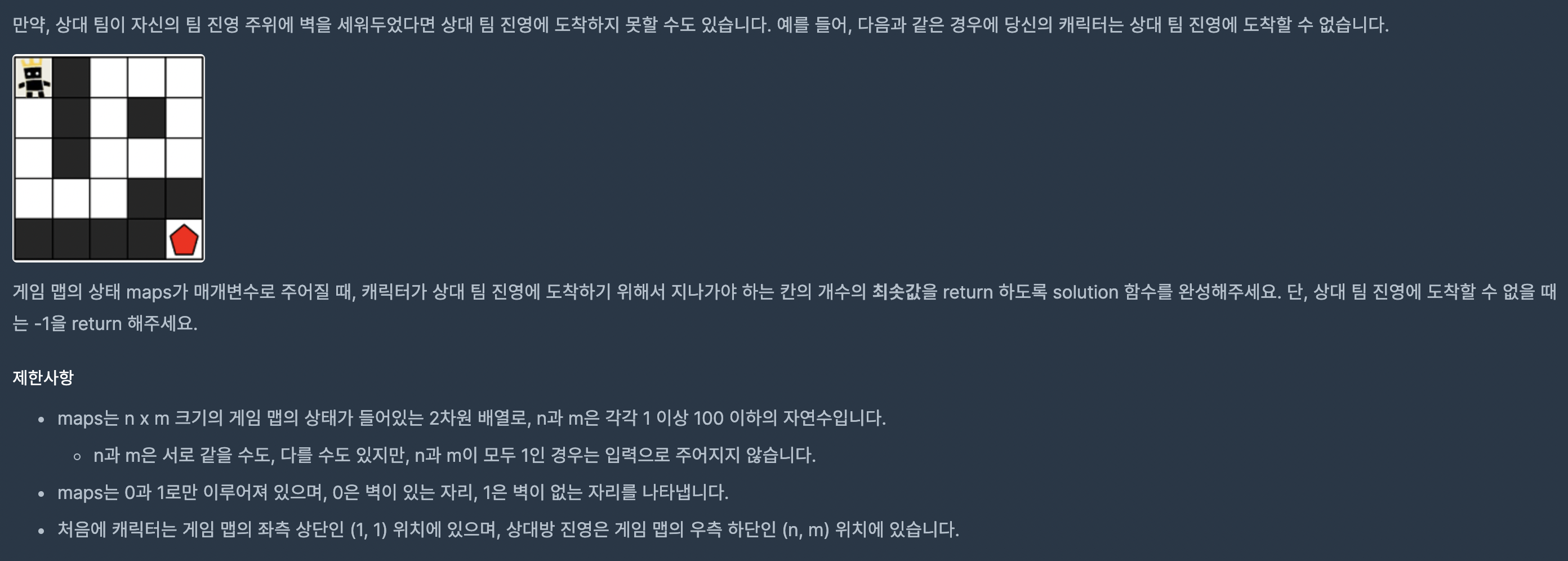😒 그냥 딱 전형적인 BFS 문제였다. 무엇인가 함정같은 것도 없고 벽을 뿌시는 것도 없고 그냥 최단거리만 구하면 되는 문제였다.



- 평소
BFS문제를 풀때 처럼 풀어냈다. - 최단거리를 구하는 문제기에 움직인 칸의 수는 전 칸의 수에서 더해줬다.
- 오른쪽 끝의 값을 찾으면
return시킴.(최단거리기에 다른 돌아오는 값은 받을 필요가 없다.) - 만약 끝칸이 막혀있는 경우를 대비해
BFS를 끝내고 나온 경우의return -1을 해준다.
#include<vector>
#include<queue>
#include<string.h>
#include<algorithm>
using namespace std;
int dy[4] = {1,-1,0,0};
int dx[4] = {0,0,1,-1};
int check[101][101];
int cnt [101][101];
int bfs(vector<vector<int> > maps)
{
queue<pair<int,int>>q;
q.push({0,0});
check[0][0]=1;
memset(cnt,10001, sizeof(cnt));
cnt[0][0]=1;
while(!q.empty())
{
int y = q.front().first;
int x = q.front().second;
q.pop();
if(y==maps.size()-1 && x == maps[0].size()-1) return cnt[maps.size()-1][maps[0].size()-1];
for(int i=0;i<4;i++)
{
int ny = y + dy[i];
int nx = x + dx[i];
if(ny >= maps.size() || nx >= maps[0].size() || ny <0 || nx<0) continue;
if(!check[ny][nx] && maps[ny][nx]==1)
{
q.push({ny,nx});
check[ny][nx]=1;
cnt[ny][nx] = min(cnt[ny][nx], cnt[y][x]+1);
}
}
}
return -1;
}
int solution(vector<vector<int> > maps)
{
int answer = 0;
answer = bfs(maps);
return answer;
}이제 슬슬 3단계 풀어봐야겠다. 2단계는 너무 쉽다. 근데 이게 왜 2단계지